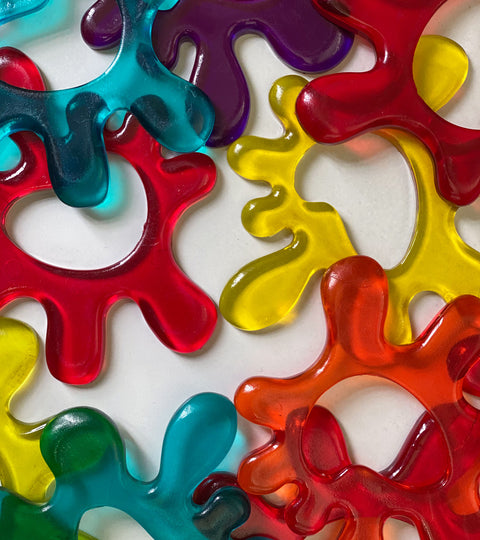In tracing the origins of our brand, we go to back to 1996 where we designed 4 products under the brand name, CIRCUS2CIRCUS (under the then 'Circus Design Company' which later became ASDS) that formed the genesis to what Rubberband is today.

Fileo was the first of the products. The inspiration for this was an amalgamation of two concurrent events. I found a metal ring normally used to rest a clay water container (known in India as a "matka"). Around the same time, I came across a production unit that made wire springs. I asked that the spring be ended in a conical form, to allow it to bend into a donut form and therefore interlock into itself.
The result was a donut-like spring that sat snuggly onto the ring. The product rested on a surface on three triangular legs and the nature of the spring allowed visiting cards and other small papers to be inserted along its diameter, giving the product the function of a visiting card holder. It was unique in its ingenuity and simplicity of function, achieved by material and construct.

Snaps' was a picture frame unlike any. The primary components were a plastic frame made of polypropylene, with a cover on the back that allowed you to place a photograph in it; an aluminium rod and a disc that formed its base. The form of the frame provided dimension, whilst the material provided softness and agility.
The detail that I was most proud of was the clip on the back of the frame, which snapped onto an aluminium rod, allowing you to place it at a height of your choosing. That very clip also allowed the frame to be orientated in both landscape and portrait.

The special packaging detail we made followed the dimensional form of the picture frame. I chose to name it "Snaps'" because it referred to snapshots as well as the primary 'snapping' detail. Looking back at this product, I am proud of our ability to have recognised a new form for a picture frame, using materials to achieve flexibility in orientation based on any photograph you choose to put in it.

Jelly Coasters were a fun product. The coaster itself was organic in shape and was available in 6 colours — all in a translucent finish. The moment you placed a glass over the coaster the coaster appeared to take a liquid form on which the glass would rest. Our choice of material, colour and finish was also based on the fact that we were rebelling against what coasters were back then. They were mostly round or square in shape and in wood or cork. The Jelly coasters were our form of a design expression — modern and fun.

Tumblers were the fourth product we designed and produced under CIRCUS2CIRCUS. These glasses were simple in form (perhaps the point we began thinking about how simplicity has a larger value), colourful, finely sandblasted and translucent. The shape allowed for the glasses to stacked onto one another. The rounded soft open edge was very satisfying to touch and feel. Although we designed these glasses for young adults, the form and colours created the perception they were for kids. This is something we continue to face when we add colour to any product. We hope at some point adults can enjoy colour and not necessarily use products because of material value or what it says about them to others.

All of these products were in some sense path breaking. They defied the norms in the ways products were in 1997. And more importantly, the product design was led not through the common practice of craft design but by Industrial design. We were aiming for both high production numbers and at the same time hoping to become the new tastemakers!
The design process that started as concepts, product design and development, branding and packaging and finally our first attempt at selling led to a learning that led us to what years later became Rubberband.
Was CIRCUS2CIRCUS successful?
No. However we would do it all over again? Without missing a heartbeat!
- Ajay Shah, Principal Designer - ASDS

